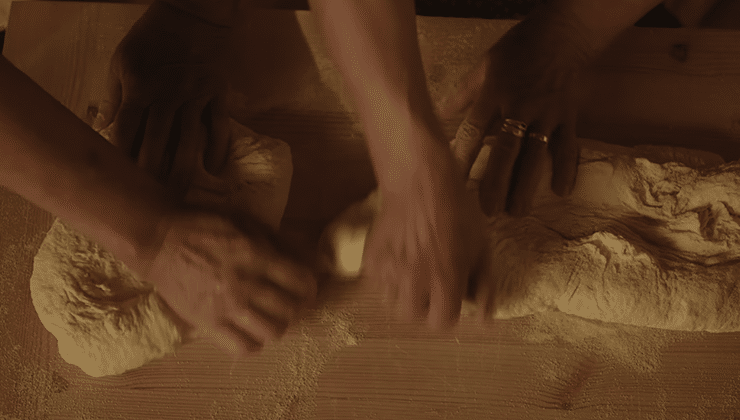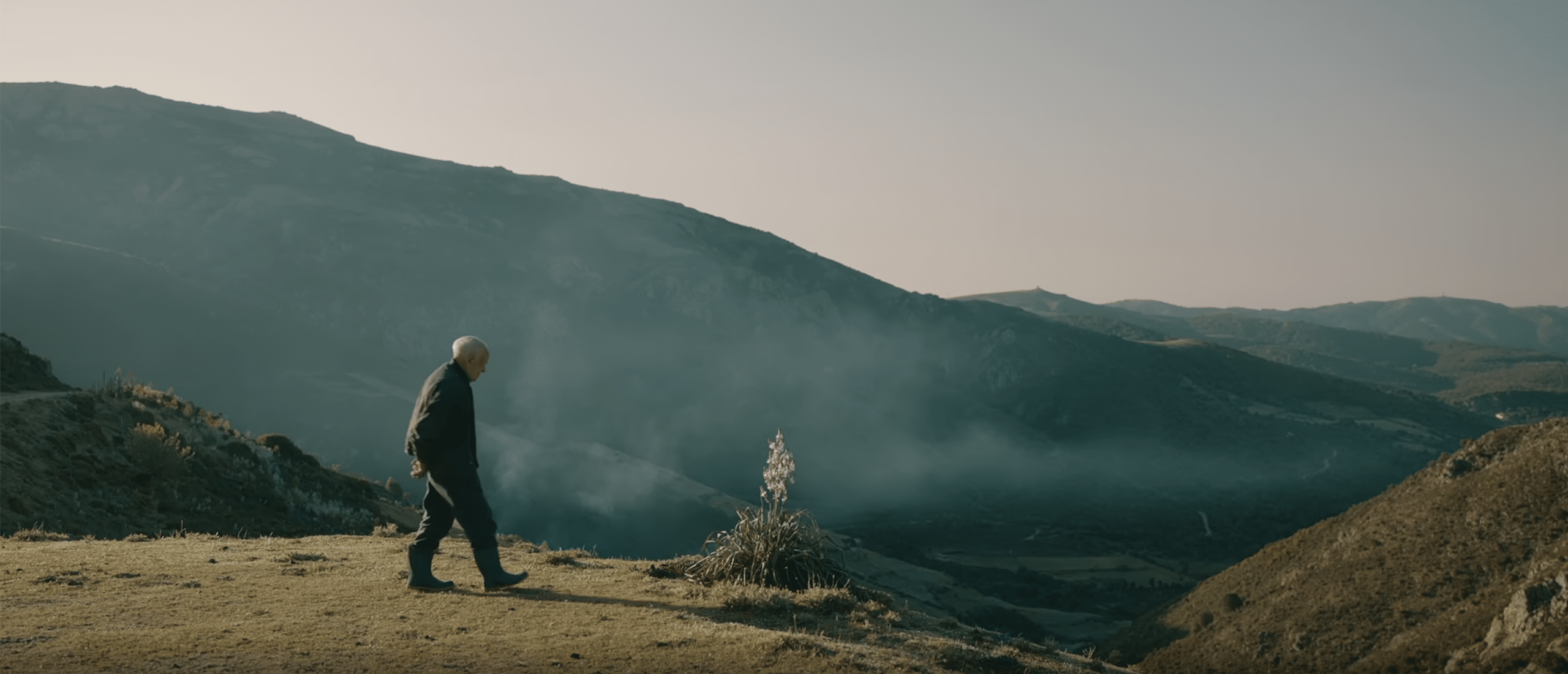Blue Zones on Netflix: Why Do the Men in This Remote Region of Italy Live So Long?
In the late 1990s, Italian researcher Dr. Gianni Pes found that there were roughly 10-times the number of 100-year-olds living in Sardinia than you’d find in a similar population in the United States. He presented his findings at a longevity-focused conference in 1999 and most of the attendees—the majority of whom were scientists themselves—didn’t believe him. Decades later, Pes was clearly right—Sardinian longevity lore is known the world over, becoming famous enough to star in a Netflix documentary.
Geographically and culturally isolated from what author-explorer-documentarian Dan Buettner calls the “corrosive forces of modernization,” Sardinia is the subject half of the second episode of the new Netflix documentary series hosted by Buettner dubbed Live to 100: Secrets of the Blue Zones. Here’s how Sardinia, a collection of small, mountainous villages off the west coast of Italy, became a hotspot for the extremely long-lived.
Walking Is Required (Mind Your Step Count)
Most of the six or so villages that make up the Sardinian Blue Zone are in the most mountainous areas of the region (almost entirely above 2,200 feet above sea level). In Pes’s early research, it was believed the higher altitude may play a role in the extended life expectancy of the locals. As time went on, it became clear that it likely wasn’t the altitude contributing to the longer lives of the natives, but the mountains themselves.
“It feels like 99 percent of trips in this Blue Zone are very uphill or downhill,” Buettner said, huffing and puffing his way around a Sardinian village during the episode.
Pes interviewed hundreds of centenarians in the region and compared the slope of the streets and areas surrounding their homes with their likelihood to live beyond average life expectancies for the greater region—the two correlated.
The people who live there don’t walk for step counts or exercise, they walk because they need to to get things done—go to the market, pharmacy, a friend’s house, or otherwise—and it’s the most convenient option.
According to Buettner, Sardinians suffer a fraction of the rate of diabetes and heart disease that Americans do, and studies have found that excessive sitting—otherwise known as the opposite of standing or walking—leads to significantly higher risk of developing type 2 Diabetes (1). And research has consistently suggested that people who walk more are significantly less likely to suffer premature death or experience a cardiovascular event (2). For what it’s worth, some research (3) has even found that getting up for a walk may significantly increase testosterone levels in men.
“Maybe if we want to live longer, we don’t need expensive gym memberships—we should start by skipping the elevator and taking the stairs,” Buettner said.

Say Yes to Sardinian Sourdough Bread, Minestrone Soup, (and More Good Carbs)
Early residents of the Sardinian Blue Zone region were considered barbarians by the rest of the island situated off the west coast of Italy (the region they lived in was literally called barbagia). This cultural isolation, compounded by the mountain topographic isolation, has led to a specific diet that’s not changed much for thousands of years. A diet consisting of a lot of carbs.
Simple carbs like bread and pasta—which are typically seen in a negative light in American nutrition discussions—are prevalent, but they’re prepared differently than in the US and elsewhere. For one, the bread is almost always real sourdough, which is leavened with a bacteria called lactobacillus, which may lower the glycemic load of a meal (4, 5), which may explain in part why diabetes is so much rarer in Sardinia.
Still, complex carbs are far more common—whole grains, beans, greens, and so on. Take minestrone, which has featured in the Sardinian diet for hundreds of years. It’s basically beans and whatever vegetables are available from the garden. These are fiber-rich ingredients that keep inflammation down (6, 7), which can be of huge benefit to the body as it ages.
Low-Stress Living
When investigating why Sardinia is home to the most long-lived men in the world, the focus was drawn to their work. Sardinian men are traditionally shepherds. But what about shepherding might contribute to male longevity?
At a basic level, it’s additional necessary movement, which we know is a key to the region’s huge life expectancies. But Buettner believes the real key is that the work isn’t stressful on the mind, either.
“Constant or chronic stress can cause cardiovascular disease and promote illness. It’s not that these shepherds here don’t have any stress, they just don’t see to have a lot of chronic stress,” Buettner said.
Though some stress—which manifests itself as cortisol spikes in your brain—is perfectly healthy and necessary (8), prolonged or repetitive stress is not. Chronic stress can lead to immune system instability in the body (9), bad sleep (10), and much more.
References
1. Vallance, Jeff et al (2018). Lowered testosterone in male obesity: mechanisms, morbidity and management. https://www.ncbi.nlm.nih.gov/pmc/articles/PMC6187798/
2. Sheng, Mingxin et al (2021). The relationships between step count and all-cause mortality and cardiovascular events: A dose–response meta-analysis. https://www.ncbi.nlm.nih.gov/pmc/articles/PMC8724621/
3. Del Giudice, Francesco et al (2021). Association of daily step count and serum testosterone among men in the United States. https://www.ncbi.nlm.nih.gov/pmc/articles/PMC8159788/
4. Farida, Eko et al (2020). Lactobacillus rhamnosus Reduces Blood Glucose Level through Downregulation of Gluconeogenesis Gene Expression in Streptozotocin-Induced Diabetic Rats. https://www.ncbi.nlm.nih.gov/pmc/articles/PMC7201496/
5. Qiu, Xudong et al (2022). Effects of Lactobacillus supplementation on glycemic and lipid indices in overweight or obese adults: A systematic review and meta-analysis. https://www.sciencedirect.com/science/article/abs/pii/S0261561422002242
6. Faridy Juárez-Chairez, Milagros et al (2022). Potential anti-inflammatory effects of legumes: a review. https://pubmed.ncbi.nlm.nih.gov/35042569/
7. Zhu, Fengmei et al (2018). Anti-inflammatory effects of phytochemicals from fruits, vegetables, and food legumes: A review. https://pubmed.ncbi.nlm.nih.gov/28605204/
8. Thau, Lauren et al (2022). Physiology, Cortisol.
https://www.ncbi.nlm.nih.gov/books/NBK538239/
9. Morey, Jennifer N. et al (2015). Current Directions in Stress and Human Immune Function. https://www.ncbi.nlm.nih.gov/pmc/articles/PMC4465119/
10. Pulopulos, Matias M. et al (2020). Relationship between Cortisol Changes during the Night and Subjective and Objective Sleep Quality in Healthy Older People. https://www.ncbi.nlm.nih.gov/pmc/articles/PMC7068538/











